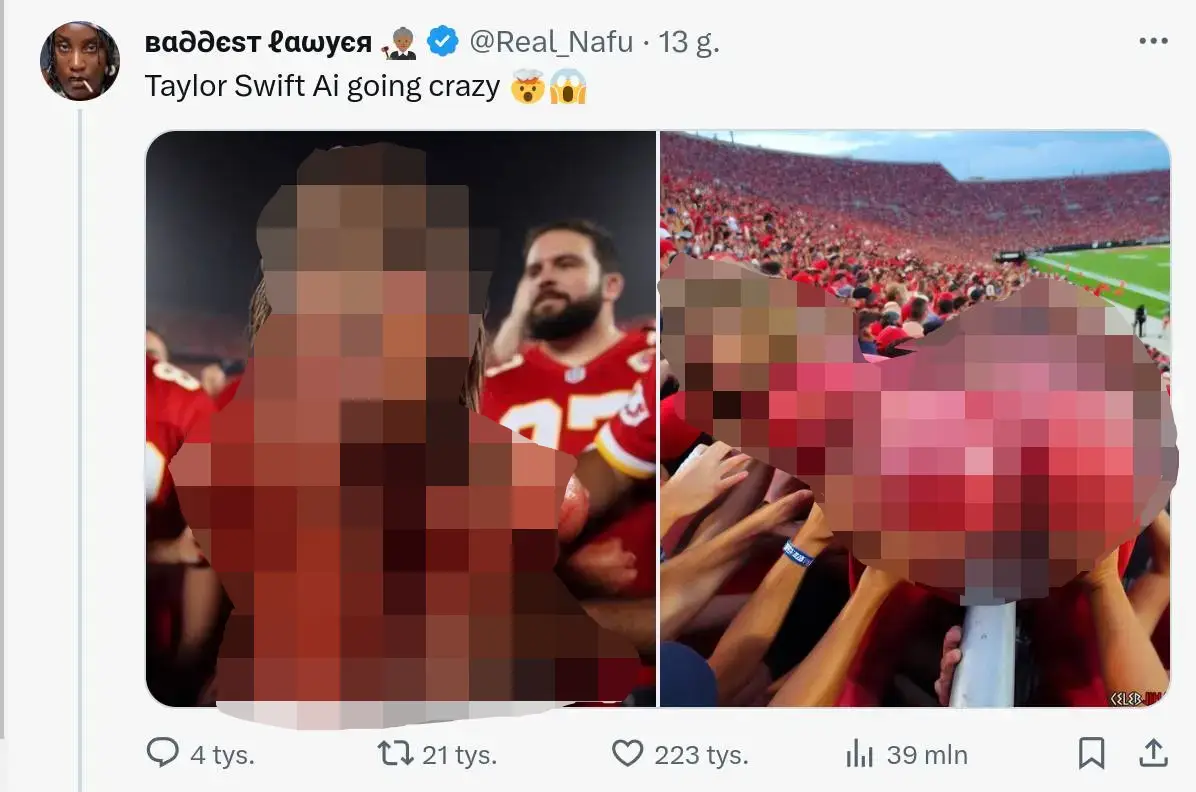The digital world recently witnessed a storm of controversy with the emergence of AI-generated pictures depicting American singer-songwriter Taylor Swift in a highly offensive manner. This incident has sparked a global conversation about the ethics and regulations surrounding artificial intelligence and deep fake technology.
Taylor Swift: An Icon Under Digital Attack
Taylor Swift, Time Magazine’s most powerful person of the year in 2023, has long been an influential figure in the cultural, political, and economic spheres. Her impact, termed as “Swiftonomics”, is far-reaching, from elevating tourism through her concerts to boosting viewership of sporting events. However, this influence has also made her a target for malicious AI technology use.
Recently, AI-deep fake imagery portraying Swift in derogatory scenarios went viral, causing widespread outrage among her fans, popularly known as Swifties. These deep fake images, shared by users like @Real_Nafu (account suspended by X), showed the artist in a disparaging light, leading to significant backlash and concern from netizens worldwide.

The Swifties’ Response to Defamation
In response to this violation, Swift’s fans rallied together, encouraging a flood of positive content on social media platforms to drown out the deepfake images. This action by Swifties highlights the power of community in combatting digital misinformation and malicious content.

The Growing Concern Over Deep Fake Technology
The issue of AI-generated images of celebrities, created without their consent, is not new. Last year, actress Scarlett Johansson took legal action against an AI app that used her likeness in online advertisements without permission. This incident, along with Swift’s case, underscores the urgent need for regulation in the deep fake technology sphere.
AI-generated content has become increasingly easy to produce, even for those without technical skills. While some use this technology for advertising purposes, others exploit it to create viral moments with malicious intent. The challenge lies in the difficulty of distinguishing real content from fabricated ones.
Prominent personalities, including Pope Francis, a victim of a deep fake himself, have spoken out against the misuse of this technology. They urge for tighter restrictions to prevent the dissemination of disinformation.
Legal Steps Towards Regulation
In response to these concerns, Rep. Yvette Clarke, D-N.Y., introduced the DEEP FAKES Accountability Act of 2023. This proposed legislation requires creators to digitally watermark deep fake content, making it easier to identify and regulate. However, this regulation is still pending ratification and passage in Congress.
Taylor Swift AI Pictures: A Call for Ethical AI Use
The controversy surrounding the AI-generated images of Taylor Swift serves as a critical reminder of the ethical responsibilities in the digital age. As AI technology continues to evolve, it becomes imperative to establish clear regulations and ethical guidelines to safeguard individuals’ rights and realities. The digital community must come together to ensure the responsible use of AI, preventing its misuse in creating harmful and misleading content.

